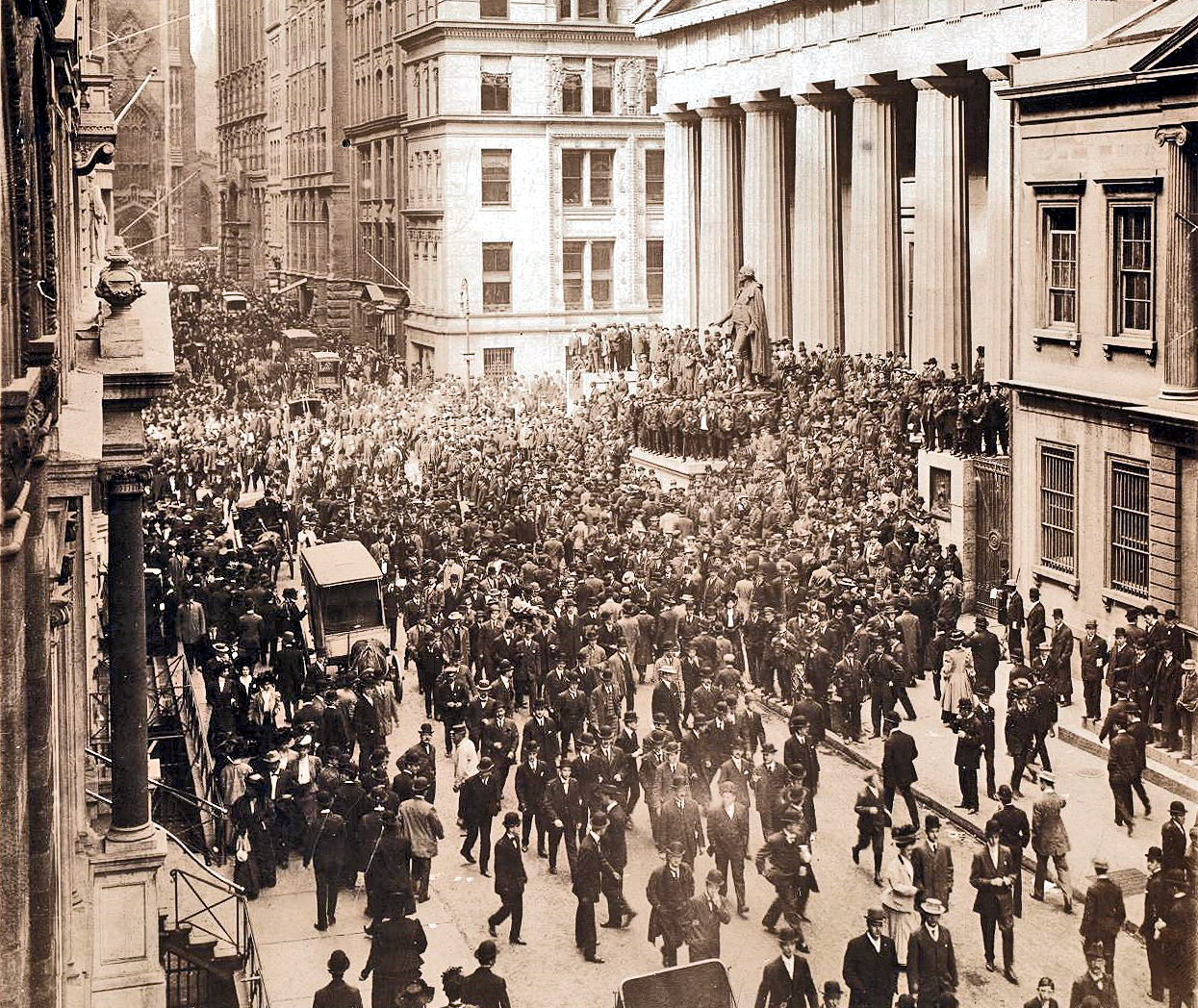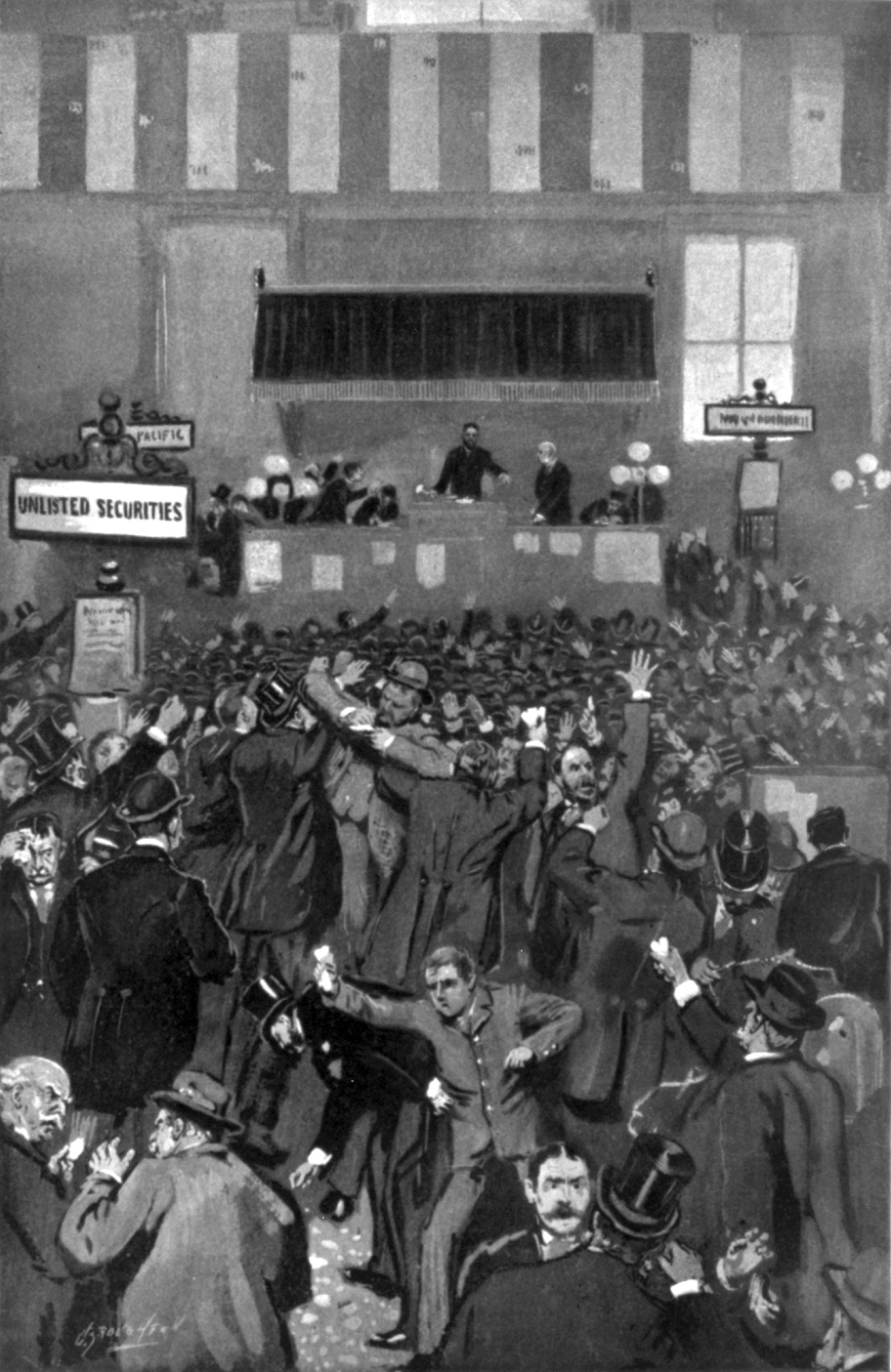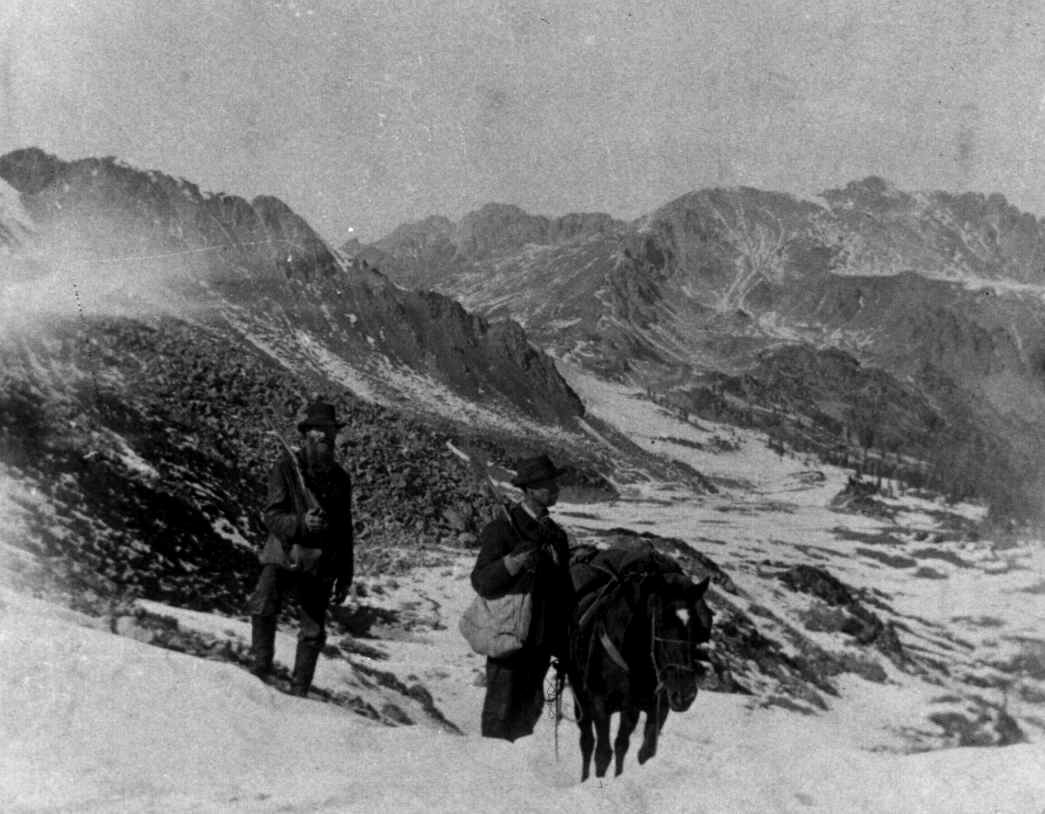|
Silverton, Colorado
Silverton is a statutory town that is the county seat, the most populous community, and the only incorporated municipality in San Juan County, Colorado, United States. The town is located in a remote part of the western San Juan Mountains, a range of the Rocky Mountains. The first mining claims were made in mountains above the Silverton in 1860, near the end of the Colorado Gold Rush and when the land was still controlled by the Utes. Silverton was established shortly after the Utes ceded the region in the 1873 Brunot Agreement, and the town boomed from silver mining until the Panic of 1893 led to a collapse of the silver market, and boomed again from gold mining until the recession caused by the Panic of 1907. The entire town is included as a federally designated National Historic Landmark District, the Silverton Historic District. Originally called "Bakers Park", Silverton sits in a flat area of the Animas River valley and is surrounded by steep peaks. Most of the peak ... [...More Info...] [...Related Items...] OR: [Wikipedia] [Google] [Baidu] |
Town
A town is a human settlement. Towns are generally larger than villages and smaller than city, cities, though the criteria to distinguish between them vary considerably in different parts of the world. Origin and use The word "town" shares an origin with the German language, German word , the Dutch language, Dutch word , and the Old Norse . The original Proto-Germanic language, Proto-Germanic word, *''tūnan'', is thought to be an early borrowing from Proto-Celtic language, Proto-Celtic *''dūnom'' (cf. Old Irish , Welsh language, Welsh ). The original sense of the word in both Germanic and Celtic was that of a fortress or an enclosure. Cognates of ''town'' in many modern Germanic languages designate a fence or a hedge. In English and Dutch, the meaning of the word took on the sense of the space which these fences enclosed, and through which a track must run. In England, a town was a small community that could not afford or was not allowed to build walls or other larger fort ... [...More Info...] [...Related Items...] OR: [Wikipedia] [Google] [Baidu] |
PO Box
A post office box (commonly abbreviated as P.O. box, or also known as a postal box) is a uniquely addressable lockable box located on the premises of a post office. In some regions, particularly in Africa, there is no door to door delivery of mail; for example, in Kenya. Consequently, renting a PO box has traditionally been the only way to receive mail in such countries. Generally, post office boxes are rented from the post office either by individuals or by businesses on a basis ranging from monthly to annual, and the cost of rent varies depending on the box size. Central business district (CBD) PO boxes are usually more expensive than rural PO boxes. In the United States, the rental rate used to be uniform across the country. Now, however, a postal facility can be in any of seven fee groups by location; in addition, certain customers qualify for free box rental, usually because the Postal Service does not offer carrier-route delivery to their physical addresses. In the ... [...More Info...] [...Related Items...] OR: [Wikipedia] [Google] [Baidu] |
Panic Of 1907
The Panic of 1907, also known as the 1907 Bankers' Panic or Knickerbocker Crisis, was a financial crisis that took place in the United States over a three-week period starting in mid-October, when the New York Stock Exchange fell almost 50% from its peak the previous year. The panic occurred during a time of economic recession, and there were numerous runs on banks and on trust companies. The 1907 panic eventually spread throughout the nation when many state and local banks and businesses entered bankruptcy. The primary causes of the run included a retraction of market liquidity by a number of New York City banks and a loss of confidence among depositors, exacerbated by unregulated side bets at bucket shops. The panic was triggered by the failed attempt in October 1907 to corner the market on stock of the United Copper Company. When that bid failed, banks that had lent money to the cornering scheme suffered runs that later spread to affiliated banks and trusts, leading a we ... [...More Info...] [...Related Items...] OR: [Wikipedia] [Google] [Baidu] |
Panic Of 1893
The Panic of 1893 was an economic depression in the United States that began in 1893 and ended in 1897. It deeply affected every sector of the economy, and produced political upheaval that led to the political realignment of 1896 and the presidency of William McKinley. Causes The Panic of 1893 has been traced to many causes, one of those points to Argentina; investment was encouraged by the Argentine agent bank, Baring Brothers. However, the 1890 wheat crop failure and a failed coup in Buenos Aires ended further investments. In addition, speculations in South African and Australian properties also collapsed. Because European investors were concerned that these problems might spread, they started a run on gold in the U.S. Treasury. Specie was considered more valuable than paper money; when people were uncertain about the future, they hoarded specie and rejected paper notes.Nelson, Scott Reynolds. 2012. A Nation of Deadbeats. New York: Alfred Knopf, p. 189. During th ... [...More Info...] [...Related Items...] OR: [Wikipedia] [Google] [Baidu] |
Boomtown
A boomtown is a community that undergoes sudden and rapid population and economic growth, or that is started from scratch. The growth is normally attributed to the nearby discovery of a precious resource such as gold, silver, or oil, although the term can also be applied to communities growing very rapidly for different reasons, such as a proximity to a major metropolitan area, huge construction project, or attractive climate. First boomtowns Early boomtowns, such as Leeds, Liverpool, and Manchester, experienced a dramatic surge in population and economic activity during the Industrial Revolution at the turn of the 19th century. In pre-industrial England these towns had been relative backwaters, compared to the more important market towns of Bristol, Norwich, and York, but they soon became major urban and industrial centres. Although these boomtowns did not directly owe their sudden growth to the discovery of a local natural resource, the factories were set up there to take ... [...More Info...] [...Related Items...] OR: [Wikipedia] [Google] [Baidu] |
Ouray (Ute Leader)
Ouray (, 1833 – August 24, 1880) was a Native American chief of the Tabeguache (Uncompahgre) band of the Ute tribe, then located in western Colorado. Because of his leadership ability, Ouray was acknowledged by the United States government as a chief of the Ute and he traveled to Washington, D.C. to negotiate for the welfare of the Utes. Raised in the culturally diverse town of Taos, Ouray learned to speak many languages that helped him in the negotiations, which were complicated by the manipulation of his grief over his five-year-old son abducted during attack by the Sioux and trantee. Ouray met with Presidents Lincoln, Grant, and Hayes and was called the man of peace because he sought to make treaties with settlers and the government. Following the Meeker Massacre (White River War) of 1879, he traveled in 1880 to Washington, D.C. He tried to secure a treaty for the Uncompahgre Ute, who wanted to stay in Colorado; but, the following year, the United States forced the Uncompah ... [...More Info...] [...Related Items...] OR: [Wikipedia] [Google] [Baidu] |
Ute People
Ute () are the Indigenous people of the Ute tribe and culture among the Indigenous peoples of the Great Basin. They had lived in sovereignty in the regions of present-day Utah and Colorado in the Southwestern United States for many centuries until European settlers conquered their lands. The state of Utah is named after the Ute tribe. In addition to their ancestral lands within Colorado and Utah, their historic hunting grounds extended into current-day Wyoming, Oklahoma, Arizona, and New Mexico. The tribe also had sacred grounds outside their home domain that were visited seasonally. There were 12 historic Tribe, bands of Utes. Although they generally operated in family groups for hunting and gathering, the communities came together for ceremonies and trading. Many Ute bands were culturally influenced by neighboring Native Americans in the United States, Native American tribes and Puebloans, whom they traded with regularly. After contact with early Colonial history of the Unit ... [...More Info...] [...Related Items...] OR: [Wikipedia] [Google] [Baidu] |
Pike's Peak Gold Rush
The Pike's Peak Gold Rush (later known as the Colorado Gold Rush) was the boom in gold prospecting and mining in the Pike's Peak Country of western Kansas Territory and southwestern Nebraska Territory of the United States that began in July 1858 and lasted until roughly the creation of the Colorado Territory on February 28, 1861. An estimated 100,000 gold seekers took part in one of the greatest gold rushes in North American history. The participants in the gold rush were known as "Fifty-Niners" after 1859, the peak year of the rush and often used the motto Pike's Peak or Bust! In fact, the location of the Pike's Peak Gold Rush was centered north of Pike's Peak. The name Pike's Peak Gold Rush was used mainly because of how well known and important Pike's Peak was at the time. Overview The Pike's Peak Gold Rush, which followed the California Gold Rush by approximately one decade, produced a dramatic but temporary influx of migrants and immigrants into the Pike's Peak Countr ... [...More Info...] [...Related Items...] OR: [Wikipedia] [Google] [Baidu] |
Rocky Mountains
The Rocky Mountains, also known as the Rockies, are a major mountain range and the largest mountain system in North America. The Rocky Mountains stretch in straight-line distance from the northernmost part of western Canada, to New Mexico in the southwestern United States. Depending on differing definitions between Canada and the U.S., its northern terminus is located either in northern British Columbia's Terminal Range south of the Liard River and east of the Trench, or in the northeastern foothills of the Brooks Range/ British Mountains that face the Beaufort Sea coasts between the Canning River and the Firth River across the Alaska- Yukon border. Its southernmost point is near the Albuquerque area adjacent to the Rio Grande rift and north of the Sandia–Manzano Mountain Range. Being the easternmost portion of the North American Cordillera, the Rockies are distinct from the tectonically younger Cascade Range and Sierra Nevada, which both lie farther to its west. ... [...More Info...] [...Related Items...] OR: [Wikipedia] [Google] [Baidu] |
San Juan Mountains
The San Juan Mountains is a high and rugged mountain range in the Rocky Mountains in southwestern Colorado and northwestern New Mexico. The area is highly mineralized (the Colorado Mineral Belt) and figured in the gold and silver mining industry of early Colorado. Major towns, all old mining camps, include Creede, Lake City, Silverton, Ouray, and Telluride. Large scale mining has ended in the region, although independent prospectors still work claims throughout the range. The last large scale mines were the Sunnyside Mine near Silverton, which operated until late in the 20th century and the Idarado Mine on Red Mountain Pass that closed down in the 1970s. Famous old San Juan mines include the Camp Bird and Smuggler Union mines, both located between Telluride and Ouray. The Summitville mine was the scene of a major environmental disaster in the 1990s when the liner of a cyanide-laced tailing pond began leaking heavily. Summitville is in the Summitville caldera, one of ... [...More Info...] [...Related Items...] OR: [Wikipedia] [Google] [Baidu] |
County Seat
A county seat is an administrative center, seat of government, or capital city of a county or civil parish. The term is in use in Canada, China, Hungary, Romania, Taiwan, and the United States. The equivalent term shire town is used in the US state of Vermont and in some other English-speaking jurisdictions. County towns have a similar function in the Republic of Ireland and the United Kingdom, as well as historically in Jamaica. Function In most of the United States, counties are the political subdivisions of a state. The city, town, or populated place that houses county government is known as the seat of its respective county. Generally, the county legislature, county courthouse, sheriff's department headquarters, hall of records, jail and correctional facility are located in the county seat, though some functions (such as highway maintenance, which usually requires a large garage for vehicles, along with asphalt and salt storage facilities) may also be located or conduct ... [...More Info...] [...Related Items...] OR: [Wikipedia] [Google] [Baidu] |
List Of Municipalities In Colorado
The United States, U.S. Colorado, State of Colorado has 272 municipal corporation, active incorporated municipalities, comprising 197 towns, 73 City, cities, and two Consolidated city-county, consolidated city and county governments. At the 2020 United States census, 2020 United States Census, 4,299,942 of the 5,773,714 Colorado residents (74.47%) lived in one of these 272 municipalities. Another 714,417 residents (12.37%) lived in one of the 210 List of census-designated places in Colorado, census-designated places, while the remaining 759,355 residents (13.15%) lived in the many rural and mountainous areas of the state. Colorado municipalities range in population from the Denver, City and County of Denver, the List of capitals in the United States#State capitals, state capital, with a 2020 population of 715,522, to the Carbonate, Colorado, Town of Carbonate, which has had no year-round population since the 1890 United States census, 1890 Census due to its severe winter weather a ... [...More Info...] [...Related Items...] OR: [Wikipedia] [Google] [Baidu] |

.jpg)



.jpg)





